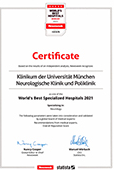About the disease
Duchenne muscular dystrophy is a genetic illness, characterized by muscle degeneration. Muscles lose their ability to move which results in restricted motor function. Duchenne muscular dystrophy is transmitted from father to son, which means that only males suffer from this disease. It usually manifests in childhood. Besides muscle disorders a person can have skeletal deformations, accompanied by respiratory and heart failures, mental and endocrine disorders. There are no treatments available yet. All existing treatment options only alleviate the symptoms. Rarely patients manage to survive past 35 years of age. The disease was first researched and described approximately in 1860s by a French neurologist Duchenne. One in 4000 is affected by this disease.
Gradual progression of muscle weakness leads to the fact that by 10-12 years many children lose the ability to move independently and they need wheelchair. However, they retain the ability to stand, on average, up to 16 years old. Nevertheless, Duchenne's muscular dystrophy is progressing very slowly. People with Duchenne muscular dystrophy are able to take care of themselves despite of their immobility for up to 15-20 years.
Duchenne muscular dystrophy is caused if X chromosome, which is passed from father to son, does not produce muscle protein dystrophin. This protein is mostly responsible for creating muscle fibers on molecular level. In Duchenne muscular dystrophy this protein is either absent completely or synthesized abnormally, which leads to destruction of muscles` fibers. In this case muscles degenerate and become replaced by fat and connective tissue.
Symptoms
Most common symptoms appear before 3 years. Pathological manifestations of this disease include:
- Loss of skeletal muscle
- Skeletal deformities
- Sometimes changes of the heart muscle
- Mental disorders
- Endocrine disorders
Muscle tissue damage is the main manifestation of the disease. Children with Duchenne muscular dystrophy are born without physical abnormalities, however they lag behind in motor development compared to their peers. They are also less active physically.
First symptoms appear when child starts walking and he falls on tiptoes. Children can experience:
- Weakness and fatigue while learning to talk
- Can’t bear physical activities
- Rarely run or jump
- Gait of these children reminds the duck moves
Child begins to stumble and move from side to side. To rise from his knees, child squats and uses hands to help his weak leg muscles. Weakness first appears in legs, then spreads to pelvis, torso, shoulders, neck and eventually to arms.
Diagnosis
Diagnosis is generally based on several kinds of studies, the main of which is a genetic test (DNA-diagnostics). Only this test can discover defect in X chromosome, which is responsible for synthesis of dystrophin. Muscle biopsy is used to determine the level of dystrophin in muscle. However with the improvement of genetic diagnostics in recent decades, this traumatic procedure is relegated to second place.
Treatment
Conservative treatment can help the child extend the time of his physio activity. There is number of methods aimed to maintain and support muscle strength and compensate for changes in cardiovascular and respiratory systems. Most common drugs are steroids, which maintain muscle strength and slow down disease progression. In addition, steroids can reduce the risk of scoliosis development. It is believed that the best time to start therapy is the age of 4-6 years. Doses of drugs are assigned individually. If there are problems with heart, a child is prescribed with cardiac drugs.
Non-drug therapy for children with Duchennne`s includes physiotherapy and orthopedic care. Physiotherapy techniques allow to maintain flexibility and mobility of joints and to maintain the muscle strength. It is proved that physical activity has a positive effect on course of disease and the inactivity and bed rest on the contrary contribute to more fast progression of the disease. Therefore it is necessary to continue all possible physical activities even while being bound to wheelchair. Regular massage courses and swimming can also have beneficial effect. Usually children with Duchenne do not want to move a lot that is why it is so important for their parents to make children exercise on a regular basis and stretch muscles as often as possible. Children with Duchenne muscular dystrophy can also attend special classes, where they will be able to strengthen muscles, which will help them move more freely.
Orthopedic devices may significantly improve patient`s condition. Some devices maintain a standing position, some of them help the patient to rise and eliminate contractures in legs. Also special corsets can help a patient not to develop scoliosis and to always have a good posture. Such corsets are worn even at night. Corsets provide improvement and relief to patients thus giving opportunity to walk often and play with their peers.
According to American medical site News Medical, Faculty of Binghamton University conducted a research, which determined that patients with this disease can alleviate their symptoms and prolong time of mobility by treatment with gene CD40, which helps the organism cope with deficiency of dystrophin protein. If this treatment is implemented in used patients will be able to prolong the time they can walk.
Authors: Dr. Nadezhda Ivanisova, Dr. Sergey Pashchenko

















